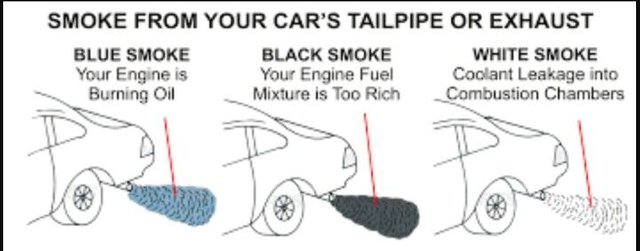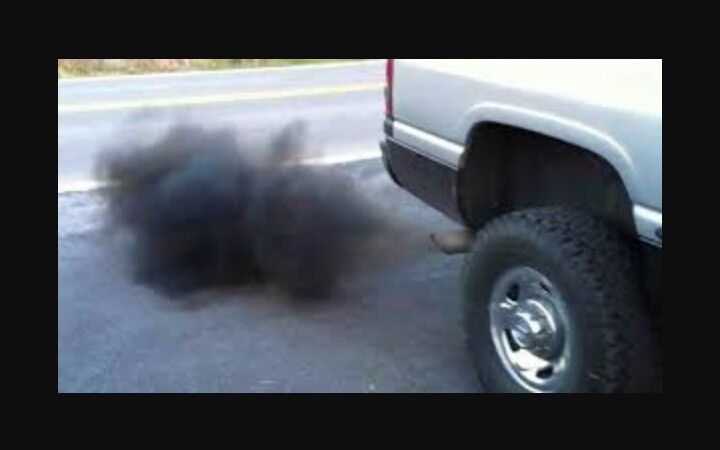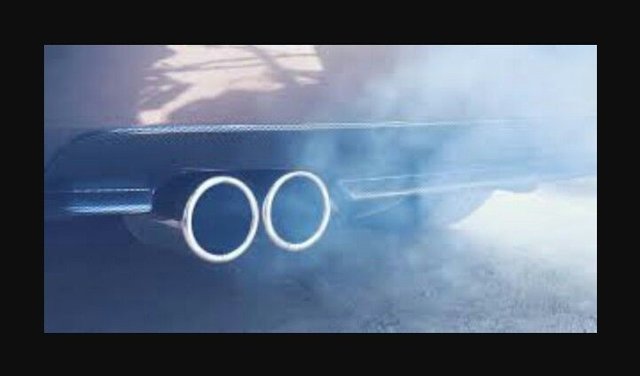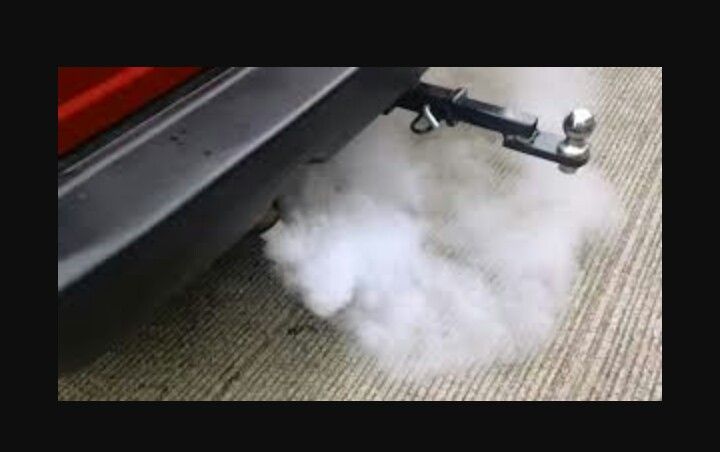DIFFERENT ENGINE SMOKE COLOURS AND THEIR MEANING

As a car owner you expect something to come from the tailpipe. This is an emissions outlet for your vehicle, and so vapors will exit from there. Some of the small emissions are harmless and nothing to worry about. But there are other types that can be signals of trouble from inside the car. Smoke is definitely a cause of concern and may hint of a number of problems that are happening underneath the hood of the car. You know how much you should be concerned the more you know about the emissions of smoke.
BLACK SMOKE

The darkest of smokes emitted from the exhaust is generally nothing much to worry about and is linked with the balance of combustion controlled by the ECU. A darker visible exhaust gas is due to an overly-rich fuel mixture, created when the air/fuel ratio descends below the optimum Stoichiometric ratio (14.7:1 in a petrol engine, 14.5:1 for diesel).The spark at ignition can only combust a certain amount of fuel in a cycle, so unburnt fuel is pushed out into the exhaust system and is combusted downstream of its intended combustion chamber.These conditions can be caused by a leaking fuel injector, a blocked fuel return pipe, a broken oxygen or airflow sensor or a fuel pressure regulator stuck closed. A dirty air filter will also prohibit nice clean air from making it through to the combustion chamber. Not only will this constrict the volume of air entering the cylinders but it will also make for less efficient combustion due to the presence of unwanted contaminants
BLUE SMOKE

A blueish hue can be found from cars that have unwanted oil mixing into the air/fuel mixture. This means there’s a contaminant within the cylinders and it’s combusted along with the air and fuel.This cross-contamination is caused by engine wear to the cylinders, pistons and valves, along with failed seals like the piston rings. Engines are manufactured to high tolerances from stock, therefore any deviance in dimensions due to constant wear and tear or a slight kink in the mentioned components can allow oil (used for engine lubrication) to seep into the cylinders.A damaged valve stem, seal or guide will allow oil to make its way down from the valvetrain above the cylinder head, while a damaged piston ring will allow oil from the crankcase to squeeze its way upwards and into the cylinders.The differing pressures within the combustion chamber throughout the engine cycle will lead to oil being sucked through any leaks in the same manner as the air/fuel mixture is sucked in via the opening of the inlet valve. This can all lead to a lack of compression within the cylinders and increased pressure within the crankcase, resulting in a decrease in power.Blue smoke can be especially common in modified and turbocharged cars. By turning up the power output from an engine, much more stress is applied to each engine component, increasing wear and the possibility of oil leaks. Turbochargers themselves can fail also, allowing the oil used to lubricate the spinning turbine to spill from dodgy seals into the cylinders along with the compressed air, adding to air/fuel mixture contamination.
WHITE SMOKE

It’s probably not smoke, but steam. And this can potentially be nothing to worry about, or you could be a mile or two away from an engine replacement. You may notice that from a cold start, plumes of white smoke will emanate from the exhaust tips. This is thankfully nothing to worry about and is created by vapour naturally created from combustion.When the exhaust system is still cold, the vapour will be much denser, to a point where it becomes visible. This vapour can still be seen when conditions are below ten degrees centigrade, with the temperature and air humidity changing the darkness and the visibility of the white vapour.If your car is fully warmed up, the ambient temperature is reasonable and your car is still producing steam, you could be looking at head gasket failure or even a cracked cylinder head or block from overheating.The head gasket is designed to keep the oil and coolant systems apart, along with cementing the cylinder head and combustion chambers together. A split in the gasket (mostly due to overheating or not allowing your engine to warm up gradually) will send liquids into places they really shouldn’t be. If a head gasket fails in a particular area, coolant will enter the cylinders.The engine will then try to compress and combust water, leading to potentially catastrophic engine damage and also steam pouring out of the exhaust. The size of the leak will dictate how much steam is produced but often when a head gasket goes, it really goes and you won’t be able to see out of the back window due to the steam engine that your car has suddenly become.
Hi! I am a robot. I just upvoted you! I found similar content that readers might be interested in:
https://www.carthrottle.com/post/different-engine-smoke-colours-and-what-they-all-mean/